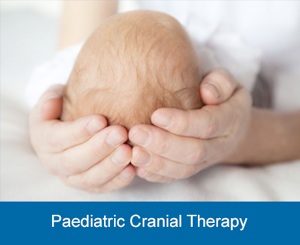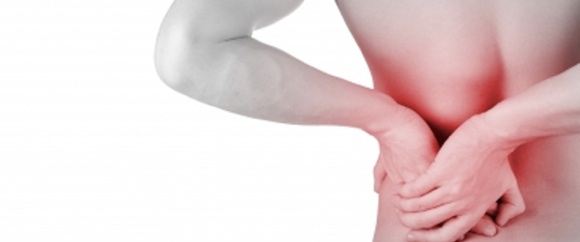



Paediatric Cranial Therapy
Cranial Therapy for Babies and Children
- It is a common belief that babies and children should have no structural stresses or strains in their bodies, because they are ‘so young’. However the reality is very different.
- Birth is one of the most stressful events of our lives. The baby is subjected to enormous forces, as the uterus pushes to expel the baby against the natural resistance of the birth canal. The baby has to turn and twist as it squeezes through the bony pelvis, on its short but highly stimulating and potentially stressful journey.
- The baby’s head has a remarkable ability to absorb these stresses in a normal delivery. In order to reduce the size of the head, the soft bones overlap, bend and warp as the baby descends. The baby’s chin is normally well tucked down towards its chest to reduce the presenting diameter of the head.
- Many babies are born with odd shaped heads as a result. In the first few days, the head can usually be seen to gradually lose the extreme moulded shape, as the baby suckles, cries and yawns. However this un-moulding process is often incomplete, especially if the birth has been difficult As a result, the baby may have to live with some very uncomfortable stresses within its head and body.
+ What effect does Retained Moulding have?
-Some babies cope extremely well with even quite severe retained moulding and compression, and are content and happy. For others it is a different story, and they can display a variety of problems.
Cranial Therapy is Beneficial in the Treatment of
+ Crying, Irritable Baby
Symptom - Crying, fractious, irritable. Baby needs to be rocked to sleep. Prefers being carried.
Reason – The baby may be uncomfortable, with a constant feeling of pressure in the head. This is made worse by the extra pressure on the head when lying down.
+ Feeding Difficulties
Symptom – The baby takes a long time to feed and one feed merges into the next. He/she may be a ‘windy’ feeder.
Reason - Feeding is difficult and tiring due to mechanical stresses through the head, face and throat. The nerves to the tongue may be irritated as they exit from the skull, which makes suckling difficult.
+ Sickness, Colic and Wind
Symptom – Regurgitation of milk between feeds, bouts of prolonged crying due to colic and wind, often worse in the evening.
Reason – The nerve to the stomach is irritated as it exits from the base of the skull, which impairs digestion. The diaphragm may be stressed or distorted, which further compromises both digestion and the ability of the stomach to retain its contents.
+ Sleep disturbances
Symptom – The baby sleeps only for short periods, and may sleep little in the day (or night), wakes to the slightest noise.
Reason – The tension on the bony and membranous casing of the skull keeps the baby’s nervous system in a persistent alert state.
As The Child Grows
As the child grows, the effects of retain moulding can lead to other problems. The following on most common, but it is by no means an exhaustive list.
-
+Infections
Retained moulding and birth stresses take their toll on the body’s reserves, and also depleted the immune system. This leaves children more vulnerable to all types of infection.
+Ear infections
Recurrent ear infections, gradually becoming more frequent, loss of hearing, leads to “glue ear.”
Reason – Retained birth compression within and around the bones of the ear impedes fluid drainage from the ear, this causes poor development of the air sinuses in the ear, and partial or complete blocking of the Eustachian tube. Infections never fully clear leaving a vulnerability to the next infection and a depleted immune system.
+ Sinus and dental problems
Persistent mouth breathers, constantly blocked or runny nose, later this increases the chance of dental overcrowding.
Reason – Impaired growth and drainage of the sinuses and bones of the face due to retained moulding compression.
+ Behavioural Problems & Learning Difficulties
Poor concentration, constant fidgeting, difficulty sitting still, hyperactivity. “Butterfly” type of child who flits from one thing to the next.
Reason – Continuation of the restlessness as a young baby, retained moulding compression makes them uncomfortable in one position for too long – which becomes habit forming. Severe compression can modify normal patterns of learning in the brain.
-
+Headaches, Aches and Pains
Headaches begin age 7-8. Growing pains. Vulnerability to sprains and other aches & pains.
Reason – Retained moulding may focus areas of pressure in the skull, as the bony joints of the skull form at around the age of 7-8 years. Postural tensions make other areas of the body more vulnerable to strain and fatigue.
+Asthma
Vulnerability to chest infection, aggravation of all degrees of asthma from mild to servere.
Reason – Retained moulding compression can aggravate a tendency to asthma. General lowered immunity leads to more chest infections. After infections, the chest remains tense and the ribs do not return to full function, aggravating an asthmatic tendency. Cranial treatment to release birth stresses and to help improve chest function is often beneficial in reducing the frequency and severity of asthma attacks.
Cranial therapy is a very gentle, safe and effective treatment for babies and children. Specific gentle pressure is applied where necessary to enable the inherent healing ability of the body to affect the release of stresses.
+ Could there be any adverse reactions?
Reactions to treatment are variable. Often the baby or child is very relaxed afterwards and sleeps well. Others have a burst of energy after treatment, usually followed by a good nights sleep. Occasionally children are unsettled after treatment. This is a temporary situation, and is usually caused when the released retained moulding has been incomplete. It is not always possible for all the retained moulding compression to release in one session, especially if it has been severe.
+ How many treatments will be needed?
On average, 2-6 treatments are sufficient. This varies according to the severity of the problems and the age of the child.
+ When to treat?
The younger the better, it is never too early to treat. For best results treatment should be before the age of 5 years. After this, the stresses and asymmetries cannot always be completely eliminated, but it is possible to achieve beneficial release of the stresses throughout life.





url : www.premierclinic.ie
email us : info@premierclinic.ie
The Village, Causeway, Tralee, Co. Kerry
Tel : 087 742 2451






















